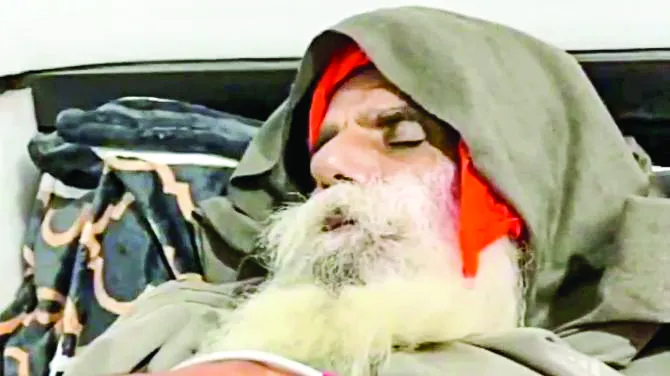Repeated appeals by agitating farmer leaders, including Jagjit Singh Dallewal, have so far failed to mobilise support from Haryana’s farmers for the ongoing protest at the Shambhu and Khanauri borders, putting a question mark over the fate of this 10-months old agitation.
Noticing that the farmers from BJP-ruled Haryana were reluctant to join this agitation and their support could be vital to build pressure on the Union government, Dallewal himself made an emotional plea to Haryana farmers, urging them to act as the “younger brothers” of Punjab farmers and support their agitation. However, his call made three days ago fell on deaf ears with Haryana farmers and unions largely staying away.
The ongoing situation marks a stark contrast to the 2020-21 farmers’ protests, during which Haryana farmers played a pivotal role in supporting Punjab’s farmers, helping them broke police barricades at several locations from Ambala to Sonipat and reach Delhi’s Singhu and Tikri borders. Even, farmers from Haryana made arrangements of food, water and shelter for their Punjab counterparts until the agitation was lifted.
But this time, even after the 10 months of agitation for similar demands the support from Haryana appears fractured, with many farmer unions opting out of the current agitation. The ground reports say that this agitation could not make any impact in Haryana so far as prominent farmer leaders from the state are not participating actively.
Even key farmer leader Gurnam Singh Charuni and Ratan Mann, who played an important role in 2020-21 agitations, have visited the Khanauri border to enquire about Dallewal’s health but have refrained from offering direct support to the agitation. Charuni and Mann have called for unity among farmer unions, but their efforts have not translated into on-ground action.
Abhimanyu Kohar remains one of the few active Haryana farmer leaders participating in the agitation. However, his efforts lack significant backing from the broader farming community.
Agricultural experts attribute this lack of support to divisions within Haryana’s farmer unions. After the 2020-21 protests, Gurnam Singh Charuni’s decision to contest the Punjab Assembly elections in 2022 led to a split in his faction, with a section forming the BKU (Sir Chhotu Ram). Meanwhile, BKU (Tikait), another major union, is waiting for the Samyukta Kisan Morcha to take a clear stand on the current agitation.
Moreover, the BJP-led Haryana government has proactively worked to prevent the agitation from spilling over into the state, which borders the national capital, Delhi.
The administration has foiled multiple attempts by Punjab farmers to cross Haryana police barricades.
Additionally, the state government recently issued a notification ensuring the procurement of 24 crops at the Minimum Support Price (MSP) set by the Centre. Key crops like wheat, paddy, bajra, maize, cotton, mustard, sunflower, and sugarcane are already being procured under MSP and Fair and Remunerative Price (FRP) policies. This move has been hailed as a significant relief for Haryana farmers, reducing the likelihood of their participation in protests.
Caste divisions within Haryana’s farming community have also contributed to the lack of collective action. Unlike Punjab, Haryana’s mandi system is relatively efficient, with government agencies procuring a majority of the crops.
“The better procurement system in Haryana has further minimized discontent among farmers,” said a farmer leader, requesting anonymity.
While some Khap Panchayat leaders from Haryana initially announced their support for the agitation, no significant protests have been organized in the state with a dominance of Jat community. This absence of grassroots mobilization underscores the diminishing unity among Haryana’s farmers.
With Punjab farmers grappling with dwindling support from their Haryana counterparts, the success of the ongoing protest appears uncertain. The experts believe that the divisions among farmer unions, coupled with the Haryana government’s proactive measures, have created significant hurdles for the agitation.
Despite the challenges, leaders like Dallewal and Kohar continue to urge for solidarity, but the fragmented state of Haryana’s farmer unions remains a critical barrier to a united front.













